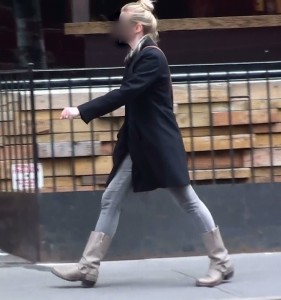Reader GT writes in with a question about stride length.
I find smaller steps seems to make it easier going, I may still burn off as many calories (Query this) but is it improving my fitness to the same degree that long strides do? Do longer strides (especially uphill ones) not strengthen my leg muscles more than shorter steps? Is it not better exercise for my heart to cover the distance in the shortest time I can? Or am I laying the foundation for future problems?
The body is a machine with a very specific design. The main point of my walking program is to help people get a better understanding of how the body works. If you know how your body is designed to work you might uses it more efficiently.
Each muscle is meant to work in a certain way to accomplish a given task. Even though a muscles might have a correct way to work, that muscle is free to do anything it wants and can take on a wide range of patterns good and bad. We have to choose how we want our muscles to work when we use them.
Your psoas major muscle is meant to walk you through life. Or more to the point, you are meant to fall forward through life through the propulsion system set up by a properly functioning psoas. If and when you do this the strides you take with be short and compact as the sensation of falling will get wheels (legs) moving faster and faster.
The quadriceps is the big massive muscle of the thigh. It is meant to be an extensor of the knee though it does aid in hip flexion. Only one of the four quadriceps muscles attach to the pelvis so it role in hip flexion is somewhat limited by design. Your big butt muscle gluteus maximus is an extensor of the leg it helps in walking when the back leg is behind the hip. But it isn’t meant to be doing much at all unless we are walking up an incline.
Both of these muscles, along with others (mostly the hamstrings) are overworked with long strides. They are forced into an action that isn’t called for in the body’s design. Another major bummer about long strides is that it forces the knee of the back leg into hyper extension. If a stride is too long we end up pushing the calf backwards to help us motor forwards. Again, this goes against the grain of the body’s stunning design.
Short steps allow us to move forward without putting pressure on the back of the knees and alos allows the psoas to take the lead role and walking us through life.
***

